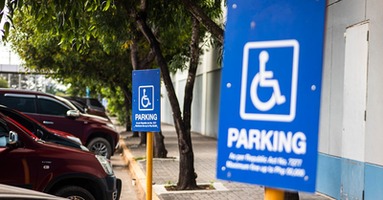
How Pregnancy Complications Can Affect Your Ability to Walk
Pregnancy is a profound and transformative journey, but it also comes with significant physical and emotional challenges. While many women experience a healthy and uncomplicated pregnancy, some face complications that can affect their ability to move comfortably. Among these, preeclampsia, gestational diabetes, and severe sciatica stand out as conditions that can severely impact mobility, particularly walking.
This article explores how these gestational complications can influence your ability to walk, and provides practical advice for managing these challenges. Additionally, it includes an important section on the possibility of obtaining a disability pass during your motherhood journey, specifically addressing whether pregnant women can qualify for such a permit due to mobility impairments.
Understanding Pregnancy Complications and Their Impact on Mobility
Gestational complications can arise from various physiological changes that the body undergoes to support the growing fetus. Some of these complications, if not properly managed, can significantly affect a woman’s ability to walk, leading to discomfort, pain, or even temporary disability.
1. Preeclampsia
Preeclampsia is a serious gestational complication characterized by high blood pressure and signs of damage to another organ system, most often the liver and kidneys. It usually begins after 20 weeks of the maternal phase in women whose blood pressure had previously been normal.
How Preeclampsia Affects Mobility
- Swelling (Edema): One of the hallmark symptoms of preeclampsia is swelling, particularly in the face, hands, and feet. Severe swelling in the lower extremities can make walking difficult, as the fluid buildup puts pressure on nerves and joints.
- Headaches and Visual Disturbances: Preeclampsia often causes severe headaches and visual disturbances, such as blurred vision or sensitivity to light. These symptoms can affect balance and coordination, making walking more challenging.
- Fatigue and Weakness: The increased blood pressure and stress on the body can lead to extreme fatigue and muscle weakness, further limiting mobility.
Managing Mobility with Preeclampsia
- Medical Monitoring: Preeclampsia requires close monitoring by healthcare providers to manage blood pressure and prevent complications. Regular check-ups are essential.
- Compression Stockings: Wearing compression stockings can help reduce swelling in the legs and improve circulation, making walking more comfortable.
- Rest and Elevation: Resting and elevating the legs can help reduce edema and alleviate discomfort. It’s important to balance rest with gentle movement to prevent further complications like blood clots.
2. Gestational Diabetes
Gestational diabetes is a type of diabetes that develops during the maternal phase and usually disappears after giving birth. It occurs when the body cannot produce enough insulin to regulate blood sugar levels effectively. Gestational diabetes can lead to various complications, including those that affect mobility. However, it can have significant effects on both the mother and the baby if not managed properly.
How Gestational Diabetes Affects Mobility
- Peripheral Neuropathy: High blood sugar levels can damage the nerves in the extremities, leading to a condition known as peripheral neuropathy. This condition causes numbness, tingling, and pain in the feet and legs, making walking painful and challenging.
- Increased Risk of Infections: Gestational diabetes increases the risk of infections, particularly in the urinary tract and feet. Foot infections can make walking difficult and require immediate medical attention.
- Fatigue and Lethargy: The body’s inability to efficiently use glucose for energy can lead to fatigue and lethargy, reducing overall stamina and making walking more taxing.
Managing Mobility with Gestational Diabetes
- Blood Sugar Control: Managing blood sugar levels through diet, exercise, and medication (if necessary) is crucial to preventing complications that affect mobility.
- Foot Care: Regular foot care, including checking for cuts, blisters, and signs of infection, is essential. Proper footwear that provides support and reduces pressure on the feet can help maintain mobility.
- Exercise: Engaging in low-impact exercises, such as walking or swimming, can help manage blood sugar levels and improve overall circulation, making it easier to stay mobile.
3. Severe Sciatica
Sciatica is a condition characterized by pain that radiates along the path of the sciatic nerve, which extends from the lower back down to the legs. During the maternal phase, sciatica can be caused by the growing uterus pressing on the sciatic nerve, leading to severe pain and discomfort.
How Sciatica Affects Mobility
- Pain: The most significant impact of sciatica is severe pain, which can be sharp, burning, or shooting down the leg. This pain can make it difficult to stand, walk, or even sit comfortably.
- Numbness and Tingling: Sciatica can also cause numbness, tingling, or weakness in the leg, making it hard to maintain balance and coordination while walking.
- Muscle Weakness: Over time, the pain and discomfort associated with sciatica can lead to muscle weakness in the affected leg, further impairing mobility.
Managing Mobility with Sciatica
- Physical Therapy: A physical therapist can provide exercises and stretches to relieve sciatic pain and strengthen the muscles supporting the lower back and legs.
- Heat and Cold Therapy: Applying heat or cold packs to the lower back can reduce inflammation and alleviate pain, making it easier to move.
- Postural Adjustments: Adjusting your posture when sitting, standing, or sleeping can reduce pressure on the sciatic nerve and prevent pain flare-ups.
4. Symphysis Pubis Dysfunction (SPD)
Symphysis Pubis Dysfunction (SPD) occurs when the ligaments that normally keep the pubic bone aligned become too relaxed and stretchy, often due to hormonal changes during gestation. This can cause the pelvic joint to become unstable, leading to pain in the pelvic area, hips, and lower back and affect mobility, especially when walking.
How SPD Affects Mobility
- Pelvic Pain: SPD causes pain in the pelvic area, particularly at the front where the pelvic bones meet (the pubic symphysis). This pain can make it difficult to walk, climb stairs, or even stand on one leg.
- Waddling Gait: Many women with SPD develop a characteristic waddling gait as they try to reduce the pain while walking.
- Reduced Range of Motion: The pain and instability in the pelvic region can limit the range of motion in the hips and legs, making it difficult to perform daily activities.
Managing Mobility with SPD
- Support Belts: Wearing a pelvic support belt can help stabilize the pelvis and reduce pain while walking.
- Physical Therapy: A physical therapist can provide exercises to strengthen the muscles around the pelvis and improve mobility.
- Movement Modifications: Avoiding movements that exacerbate pain, such as standing on one leg or twisting, can help manage symptoms.
5. Varicose Veins and Deep Vein Thrombosis (DVT)
Varicose veins are swollen, twisted veins that often develop in the legs during gestation due to increased blood volume and pressure from the growing uterus. While varicose veins are usually harmless, they can cause discomfort and pain, particularly after prolonged standing or walking. In more severe cases, varicose veins can increase the risk of deep vein thrombosis (DVT), a condition where a blood clot forms in a deep vein, usually in the legs.
How Varicose Veins and DVT Affects Mobility
- Pain: Varicose Veins and DVT aching, swelling, and a heavy sensation in the legs, making it difficult to walk or stand for long periods. DVT is a more serious condition that can lead to severe pain, swelling, and redness in the affected leg.
- Reduced Range of Motion: Mobility can be significantly impaired due to the pain and the need to avoid activities that could dislodge the clot and lead to complications such as a pulmonary embolism.
Managing Mobility with Varicose Veins and DVT
- Compression Stockings: Managing varicose veins involves wearing compression stockings to improve circulation, elevating the legs to reduce swelling, and avoiding prolonged periods of standing or sitting.
- Regular Physical Activity: Regular physical activity, such as walking, can help improve circulation and reduce the risk of DVT.
- Medical Treatment: If DVT is diagnosed, immediate medical treatment is required, including anticoagulant medications to prevent the clot from growing and to reduce the risk of complications. In some cases, bed rest may be necessary to prevent the clot from moving, further limiting mobility.
6. Placenta Previa
Placenta previa is a condition where the placenta partially or completely covers the cervix, the opening to the uterus. This can lead to severe bleeding during gestation and delivery, posing significant risks to both the mother and baby.
How Placenta Previa Affects Mobility
- Limited Physical Activity: Women with placenta previa are often advised to limit physical activity to reduce the risk of bleeding. In severe cases, bed rest may be recommended, which can lead to muscle weakness and further impair mobility. The fear of triggering bleeding can also make women hesitant to engage in even mild physical activity, further contributing to mobility challenges.
Managing Mobility with Varicose Veins and DVT
- Activity Restrictions and Healthcare Monitoring: Managing placenta previa typically involves close monitoring by a healthcare provider, with activity restrictions based on the severity of the condition. In cases where bed rest is recommended, it's important to engage in gentle movements and stretching exercises to maintain muscle tone and prevent blood clots. Physical therapy may also be beneficial in maintaining mobility while adhering to activity restrictions.
Understanding Disabled Parking Options for Pregnant Women
Given the significant mobility challenges that can arise from pregnancy complications, many women may wonder if they are eligible for a disability pass and how a disabled parking permit can help during pregnancy. A disability tag can provide essential support by allowing closer access to buildings and reducing the physical strain associated with walking long distances.
Can I Get a Disabled Parking Permit During Pregnancy?
The eligibility for an accessible tag during the maternal phase depends on the severity of the mobility issues and the specific criteria set by local authorities. Generally, a pregnant woman may qualify for a temporary disability pass if she experiences severe conditions such as:
Preeclampsia: The swelling and high blood pressure associated with preeclampsia can severely impact mobility, making it difficult to walk long distances.
Gestational Diabetes: If gestational diabetes leads to diabetic neuropathy or severe edema, a disability pass may be warranted.
Severe Sciatica or SPD: Conditions like sciatica and Symphysis Pubis Dysfunction (SPD) can cause extreme pain and difficulty walking, potentially qualifying for a permit.
Other Complications: Conditions like DVT or severe varicose veins that limit mobility may also make a pregnant woman eligible for an accessible tag.
Eligibility for Disabled Parking Permits During Pregnancy
While being pregnant itself is not considered a disability, complications that severely affect mobility can make a pregnant woman eligible for a disability pass. The eligibility criteria for an accessible pass vary by state and country, but they generally include:
- Severe Mobility Impairment: If a gestational complication such as preeclampsia, severe sciatica, or SPD causes significant difficulty in walking, standing, or balancing, you may qualify for a disability tag.
- Certification from a handicapMD Healthcare Provider: Most states require a certification from a handicapMD healthcare provider, such as a doctor or physical therapist, to confirm that your mobility is severely impaired due to a medical condition related to your current pregnant state.
- Temporary vs. Permanent Permits: Depending on the severity and expected duration of your mobility impairment, you may be eligible for a temporary accessible pass. These permits are typically valid throughout gestation or until your mobility improves.
How to Apply for a Disabled Parking Permit During Pregnancy
If you believe you qualify for an accessible tag due to pregnancy-related mobility issues, follow these steps:
Consult Your HandicapMD Healthcare Provider: The first step in the application process is to consult with a HandicapMD healthcare provider. Discuss your symptoms and mobility challenges with your doctor, and ask if they believe you qualify for a handicap tag. The healthcare provider will complete the medical certification portion of your application, so it's important to have this conversation early in the process.
Obtain the Application Form: Visit your state’s Department of Motor Vehicles (DMV) website or office to obtain the required application form. Some states also allow you to apply online.
Complete the Application: Fill out the required sections of the application form and have your healthcare provider complete the medical certification portion.
Submit the Application: Submit your completed application, along with any required fees, to your state’s DMV or equivalent agency. Processing times may vary, so it’s advisable to apply as soon as you realize you need the permit.
Use the Permit: Once approved, you will receive a placard or permit to display in your vehicle. This allows you to park in designated disabled parking spaces, which are typically closer to building entrances and offer more space for getting in and out of your vehicle.
Benefits of a Disabled Parking Permit During Pregnancy
Having an accessible tag during gestation can offer several benefits, especially if you are experiencing severe mobility challenges:
- Easier Access to Medical Appointments: Disabled parking spaces are typically located closer to building entrances, making it easier to attend frequent medical appointments without the added strain of walking long distances.
- Reduced Physical Strain: Parking closer to your destination reduces the physical strain on your body, helping to prevent pain flare-ups and manage symptoms more effectively.
- Increased Safety: Disabled parking spaces are usually wider, providing more room to safely enter and exit your vehicle, particularly important if you have difficulty maneuvering due to gestational complications.
To obtain a disability pass while in gestation, a handicapMD healthcare provider must certify that the mobility issues are significant enough to warrant the need for closer parking. The application process typically involves submitting a form signed by a healthcare provider to the local Department of Motor Vehicles (DMV) or equivalent authority.
For women experiencing severe mobility challenges during their maternal journey, a disability tag can provide much-needed relief, enabling them to access essential services and maintain a higher quality of life during this critical time.
Conclusion: Managing Mobility Challenges During Pregnancy
Pregnancy is a time of profound change, and while it is often a joyous journey, it can also present significant physical challenges, particularly when complications arise. Conditions such as preeclampsia, gestational diabetes, severe sciatica, and others can have a substantial impact on a woman's ability to walk and maintain her mobility. Understanding these challenges and exploring solutions, such as obtaining a disability parking pass, can help women manage these difficulties more effectively.
It's essential for pregnant women to stay informed about their health, work closely with healthcare providers, and take proactive steps to manage mobility challenges. By doing so, they can reduce the physical strain of gestational complications and focus on maintaining their well-being and preparing for the arrival of their baby.
If you are experiencing severe mobility challenges, consider applying for a disability parking tag to make daily activities more manageable. By working closely with your healthcare provider and utilizing available resources, you can navigate these challenges more effectively and focus on the excitement and joy of bringing a new life into the world.
For more information on managing gestational complications and mobility issues, visit HandicapMD.com.
References
- American College of Obstetricians and Gynecologists (ACOG). (2023). Hypertension in Pregnancy.
- Mayo Clinic. (2023). Gestational Diabetes.
- American Pregnancy Association. (2023). Sciatica During Pregnancy.
- National Health Service (NHS). (2023). Symphysis Pubis Dysfunction (SPD).
- National Institute for Health and Care Excellence (NICE) - Guidelines on managing gestational diabetes and preeclampsia.
- American Academy of Orthopaedic Surgeons (AAOS) - Sciatica and mobility management during pregnancy.
- The Society of Obstetricians and Gynaecologists of Canada (SOGC) - SPD and pelvic pain management during pregnancy.
.png)






